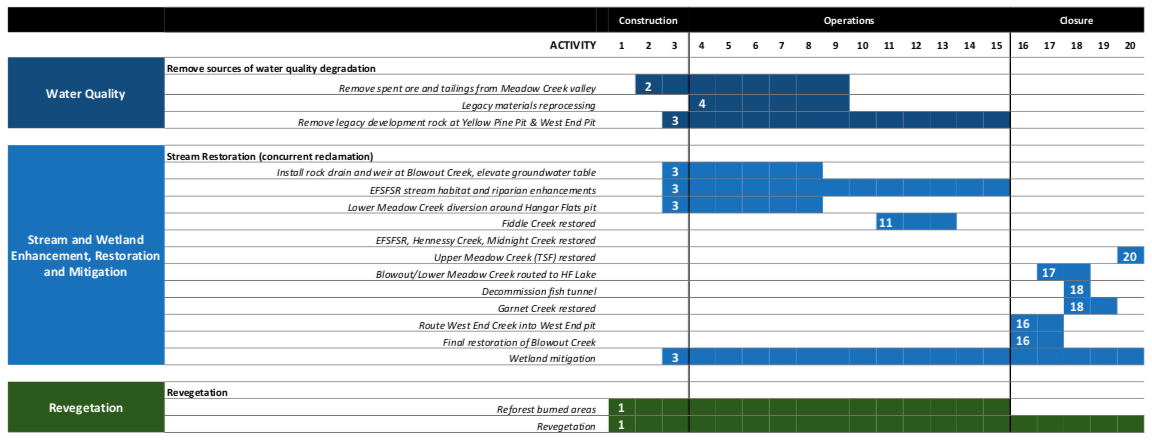Published on June 14, 2019
The Stibnite Mining District has a long history of mining, spanning more than a century. For most of the time the site was in operation, regulatory and environmental laws were limited and expectations around reclamation were very different than they are today. That, combined with the critical mining for the war effort at Stibnite, has resulted in a legacy of environmental damage.
Today, the United States has some of the strictest mining and environmental laws and regulations in the world. There is heavy oversight of the mining industry and stringent requirements that every company must meet if they want their projects to move forward. These regulations help to protect the environment and require modern mining companies to approach projects differently than their predecessors.
Reclaiming the environment is a must for mining companies. However, when we were designing the Stibnite Gold Project, we wanted to take care for the environment a step further. From the outset, our philosophy has been to use responsible mining as a tool to repair the damage left behind and restore the site, not just reclaim it to the standards required by law.
To this day, Stibnite is home to abandoned mine pits and waste rock dumps, uncontrolled erosion and degraded water quality. Large tracts of land have been deforested, fish migration to native spawning grounds has been blocked and rivers, streams, wetlands and fish habitats have been compromised. Put another way, the site is in a state of advanced disrepair and is in urgent need of attention and restoration. And all of these impacts were created long before Midas Gold became involved in the site.
We have a plan to fix all of these problems. And because the damage is so widespread, we do not believe restoration should wait until mining is complete. Recently, we have seen some inaccurate claims that reclamation will not start until after our project is complete. That is simply not true. Our restoration and reclamation efforts have already begun and will continue side by side with mining. The chart below outlines our plans for concurrent reclamation and restoration.
To date, we’ve planted more than 50,000 trees at site to help control erosion and reduce sedimentation in the East Fork of the South Fork of the Salmon River. We’ve removed 30.5 tons of historic scrap metal from the site and, already, we’ve reclaimed 33 acres of land. While these are small beginnings, more widespread restoration work requires large scale solutions that are currently being permitted as part of the redevelopment plans for the site.
In our permit application, we have presented a plan to permanently reconnect fish to their native spawning grounds for the first time in more than 80 years. We have a plan to improve surface and ground water quality. We have a plan to fix the largest source of sedimentation in the watershed. We have a plan to restore and create new wetland habitat. We have a plan to reforest and revegetate the region. And, in all of these plans, the work does not wait until mining is complete.
We look forward to doing this work and want to start as soon as possible. Recently, someone questioned our true commitment to the environment because we haven’t already started some of our larger restoration efforts. There are two key reasons why many restoration and reclamation efforts have not already started. First, in order to do any environmental cleanup work, we need permits and regulatory approval as the fixes are large scale and will take years. Second, the restoration efforts we’ve outlined come with a high price tag and we need an approved mine plan in order to be able to fund this crucial investment.
Mining activity created the legacy problems that remain at site today. So, we understand how hard it is for some people to wrap their minds around mining being the solution to fix these problems. However, mining today is so different than the mining that occurred at Stibnite in the past. The likelihood that government money will be used to carry out the long overdue reclamation process at site lies somewhere between slim and none. Midas Gold, and the private investment it brings, is currently the only viable plan to help Stibnite.
The historical Stibnite Mining District needs help. We are committed to designing a project that will leave the environment in better condition than we found it. And we are equally committed to making sure those environmental benefits occur side by side with mining, so clean up doesn’t have to wait until the end of the mine life.

